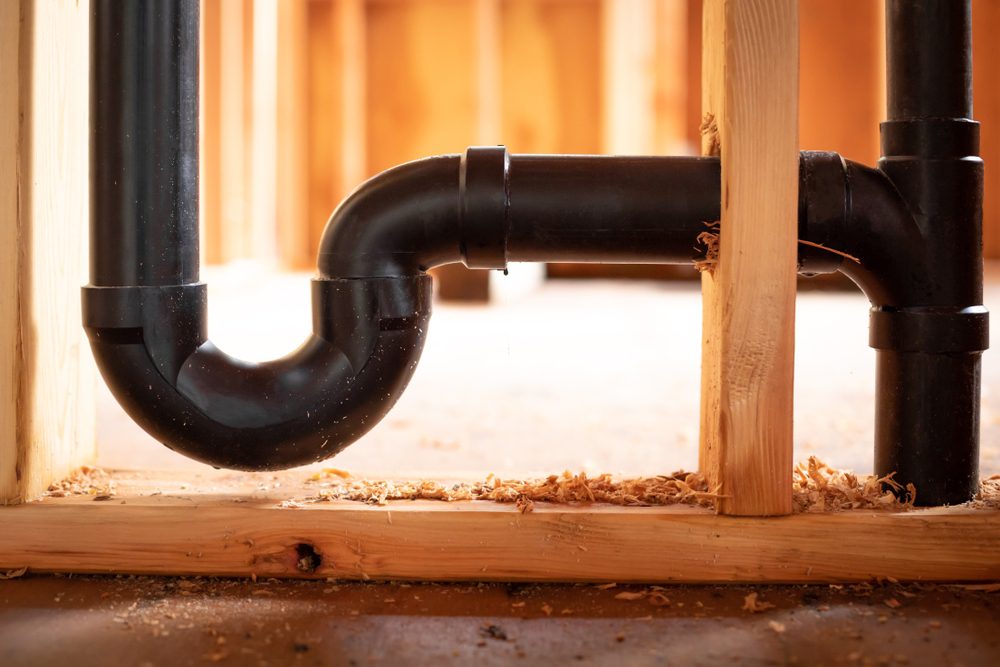The Value of Ventilation in Residential Plumbing Systems
The Value of Ventilation in Residential Plumbing Systems
Blog Article
How do you feel in relation to What Are Plumbing Vents and Why Are They Important??

Correct ventilation in pipes systems is commonly ignored, yet it is critical for preserving the functionality and safety of your home's pipes. Ventilation assists control atmospheric pressure, avoid the buildup of unsafe gases, and guarantee the reliable elimination of waste. In this overview, we will certainly discover the relevance of proper plumbing air flow, just how it functions, and the advantages it brings to your plumbing system.
Comprehending Ventilation in Pipes
Air flow in plumbing describes the network of pipelines that allow air to flow through the drainage system. These vents offer numerous objectives, including managing atmospheric pressure within the pipes, protecting against sewer gases from entering the home, and aiding in the smooth circulation of wastewater.
Just How Ventilation Functions in Plumbing Systems
Air Pressure Regulation
Proper ventilation preserves balanced air pressure within the plumbing system. When water flows with pipes, it displaces air. Without sufficient ventilation, this variation can produce unfavorable stress, causing reduce drains pipes or siphoning of water from catches, which can cause undesirable smells to permeate into the home.
Avoiding Drain Gas Build-up
Among one of the most crucial functions of plumbing vents is to prevent sewage system gases, such as methane and hydrogen sulfide, from collecting within the home. These gases can pose significant health risks and are very flammable. Vent pipelines permit these gases to run away safely outdoors.
Assisting in Waste Elimination
Air flow aids in the efficient removal of wastewater by stopping airlocks in the water drainage system. When air can move openly with the vents, it allows water and waste to move smoothly via the pipelines, minimizing the danger of obstructions and backups.
Types of Pipes Vents
Main Heap Vent
The major pile air vent, also referred to as the vent stack, is the primary vent in a pipes system. It prolongs from the main drain align via the roof covering, enabling gases to get away and fresh air to enter the system.
Branch Vent
Branch vents link to the major stack vent and serve specific fixtures, such as sinks, bathrooms, and showers. These vents make certain that each fixture has appropriate ventilation to function correctly.
Air Admission Valve (AAV).
An Air Admittance Valve (AAV) is a one-way valve that allows air to go into the plumbing system without the need for a conventional air vent pipeline prolonging via the roof covering. AAVs are typically utilized in remodellings or locations where installing a common vent is unwise.
Signs of Poor Ventilation in Pipes.
Slow Draining Fixtures.
If your sinks, tubs, or toilets are draining pipes gradually, maybe a sign of poor air flow. Insufficient air flow can produce a vacuum effect, making it difficult for water to drain effectively.
Gurgling Sounds.
Gurgling audios coming from drains are frequently an outcome of air being drawn through water catches due to negative stress in the pipelines. This is a clear indicator of insufficient ventilation.
Unpleasant Smells.
Sewage system smells inside your home are a warning that your pipes system is not appropriately aerated. This could mean that drain gases are not being appropriately vented outside, resulting in possibly hazardous problems.
Usual Ventilation Blunders.
Insufficient Vent Sizing.
Making use of small vent pipes can bring about poor air flow and stress imbalances in the system. It's important to make use of vents that fulfill the particular requirements of your pipes system.
Improper Vent Positioning.
Putting vents too far from the components they offer can minimize their efficiency. Proper positioning guarantees that air can move openly and effectively via the system.
Ignoring Code Needs.
Building regulations give details guidelines for pipes ventilation. Disregarding these codes can result in a system that stops working to function appropriately and may cause costly repair services or carcinogen.
Benefits of Correct Air Flow.
Enhanced System Performance.
Appropriately aerated plumbing systems operate more successfully, with less blockages, faster draining, and less pressure on the pipelines. This effectiveness extends the life expectancy of the pipes system.
Improved Air High Quality.
By avoiding sewer gases from entering your home, appropriate air flow adds to much better interior air high quality, making your living atmosphere healthier and extra comfy.
Stopping Water Damage.
Sufficient ventilation assists avoid water from being siphoned out of traps, which can lead to sewage system gases getting in the home and causing water damage with time.
Actions to Ensure Proper Air Flow.
Consulting Plumbing Codes.
Always consult local plumbing codes when making or customizing your pipes system. These codes offer the essential guidelines for proper airing vent and guarantee your system meets safety and security standards.
Normal Examination and Maintenance.
Regular examinations can assist determine potential air flow problems prior to they come to be significant problems. Upkeep tasks, such as cleaning air vent pipelines and checking for clogs, are necessary for maintaining the system in good working order.
Specialist Installment.
For new setups or major alterations, it's smart to hire a professional plumbing. They have the know-how to make sure the air flow system is correctly made and installed according to code.
Final thought.
Proper air flow is a crucial part of any type of pipes system, ensuring that it functions effectively and safely. By comprehending the relevance of ventilation, acknowledging the indicators of inadequate ventilation, and taking steps to keep your system, you can prevent expensive problems and protect your home's air high quality.
4 Things You Should Know About Your Plumbing Vents
What Plumbing Vents Are
Also called a vent stack, a plumbing vent is a vertical pipe attached to your drain line that runs through your roof. The plumbing vent pipe, or plumbing air vent, removes gas and odors from your plumbing system and allows fresh air to enter the pipes, helping the water to flow out of the drain pipes.
What Plumbing Vents Do
Plumbing vents have two basic functions. One of which is to allow unpleasant smelling wastewater and sewer gasses to escape your plumbing system instead of entering your home. Plumbing vent pipes are typically located on roofs, away from windows, to ensure the fumes exit the home completely.
The other function of the plumbing vent is to move fresh air into your plumbing system. This helps move water through every plumbing fixture in your house, like toilets and sink drains. Think of the way in which you need to let a little air into the bottle as you pour soda in order to make the drink flow smoothly.
Different Types of Plumbing Vents
True vent: This is the most common vent option. In simplest terms, a true vent is a vertical pipe attached to your drain line that exits through the roof. They often function as the main vent that other fixtures can connect to. Re-vent pipe or auxiliary vent: Attached to the drain line near specific plumbing fixtures, re-vent pipes run up and over to connect to the main vent. Common vent: Two plumbing fixtures installed on opposite sides of a wall are typically tied into the vent stack using something known as a sanitary cross. Wet vent: This venting option operates as a drain pipe and a vent at the same time. Wet vent drainage systems drain water from one fixture while venting the air from another. Although they’ve been used for over 100 years, wet vent systems have only recently been added to the plumbing code in many areas. If you’re planning on installing one in a bathroom remodel, make sure you check your local code prior to construction. Loop vent: For free-standing fixtures like kitchen island sinks, loop vents are ideal. These vent pipes run under the floor, rise from the P-trap, and create a loop inside the cabinet sink. Air admittance valve: An AAV is a one-way mechanical valve typically installed at the site of the plumbing fixture. AAVs allow venting to occur without having to tie into a larger venting system. They’re ideal for venting fixtures where you aren’t able to easily connect to an existing vent system. Common Plumbing Vent Issues
Although vent pipes typically don’t have water flowing through them, they’re still subject to many typical plumbing issues. For example, clogs are one of the most common problems associated with sewer vent pipes. If your vent pipe gets clogged, all of your plumbing fixtures tied into the vent stack will be affected.
A sink with a slow drain that bubbles and gurgles or a strong sewage smell around your toilet are both indicators that your toilet vent pipe is clogged. Because most vent pipes exit through the roof, old leaves, twigs or even a bird’s nest could be clogging the pipe.
Clogs in your vent pipe system cause a buildup of negative pressure, meaning that water won’t be able to flow out of your home very well. It’s similar to putting your finger over the opening of a straw to trap water inside. When you remove your finger, the water is able to flow out of the straw.
If you suspect you have any blockage in your vent, make sure you have a professional come examine the situation. Left unchecked, a blocked air vent can lead to other costly repairs, like leaks and sediment buildup.
Under Pressure
Pipe vents are essential aspects of a home’s plumbing system. Owning a home means learning about all sorts of things you never put much thought into before. But by understanding as much as you can about the important systems of your home, you can keep those budgets intact and those anxiety levels low.
https://www.homeserve.com/en-us/blog/home-improvement/plumbing-vents/

I was shown that article on What Are Plumbing Vents and Why Are They Important? through a buddy on another blog. In case you enjoyed reading our blog entry kindly don't forget to pass it around. Thanks a lot for your time invested reading it.
Call Today Report this page